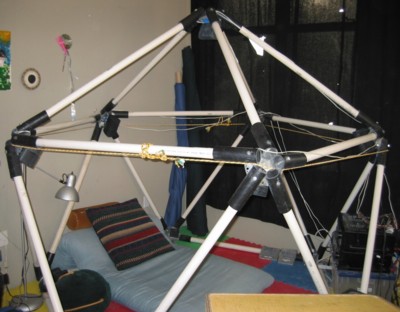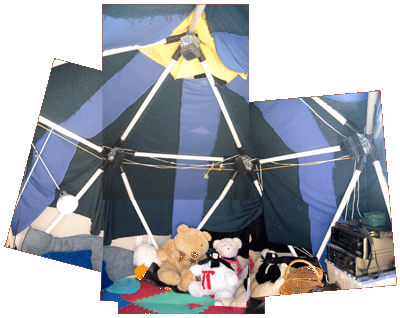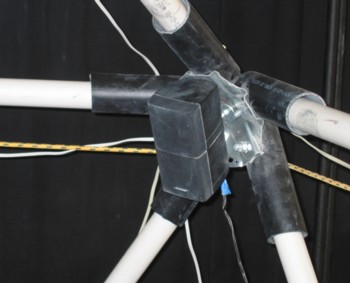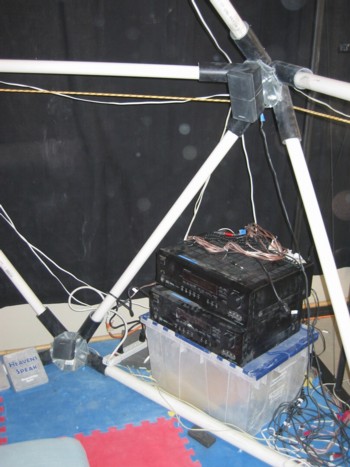Structure The (partial) icosahedron is made with PVC pipe, 25 pieces of equal length, with 11 corner joints made from a 5 sided metal plate, angled at the proper angle to form an icosahedron corner. These plates are available mail order from a chicken coop company in Minnesota. Five short pieces of ABS pipe are bolted to the plates, and the PVC pipes snick into the ABS to make the corners. The speakers are mounted on a bolt on a hole in the center of each plate, using wingnuts to allow for easy removal and replacement.
The size of the pipes determines the size of the structure. 6 foot pipes result in an icosahedron that is about 10 feet wide and 8 feet tall; 4 foot pipes give one that is 7 feet wide and about 6 feet tall.


For the Burning Man installation, the icosahedron made of 6 foot pipes was enclosed in another icosahedron of the same design, made with 8 foot pipes. It was about 12 feet tall and 15 feet wide. That was covered with a form-fitted cover made of old sails discarded from a sail manufacturer. Then a small vestibule, like an igloo door, served as the front door and foyer. A cloth tunnel connected the vestibule with the inner structure. The electronics to run the computer and amps and the battery power system were placed in the space between the two structures and not usually visible.


At Burning Man, the system was powered by three 220 amp-hour, 12 volt battery packs driving an inverter. Together with the lights and a small fan for the space, the system drew 300 to 400 watts when turned up to a reasonable level. The two main challenges in the desert environment at Burning Man are keeping the electronics dust-free and keeping them cool in the daytime heat. The computer, audio interface, and two amps were contained in a sealed, insulated shock-mount rack case that had two Peltier junction cooling units, with computer fans attached inside and out. That system was successful in keeping dust out, but drew a lot of power, and almost kept the electronics cool enough. After running for several hours, the computer got a bit uncomfortable with the heat and started to run slower, sometimes shutting off the audio processing. I had to come in several times a day to make sure it was still working, and often had to let the computer cool and reboot.





